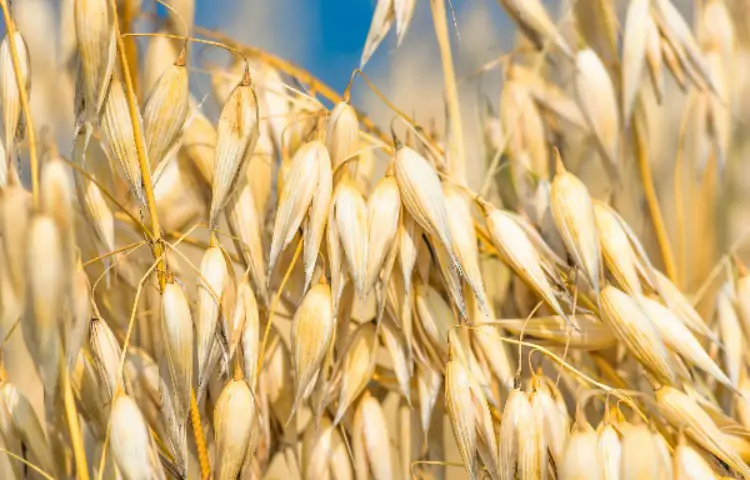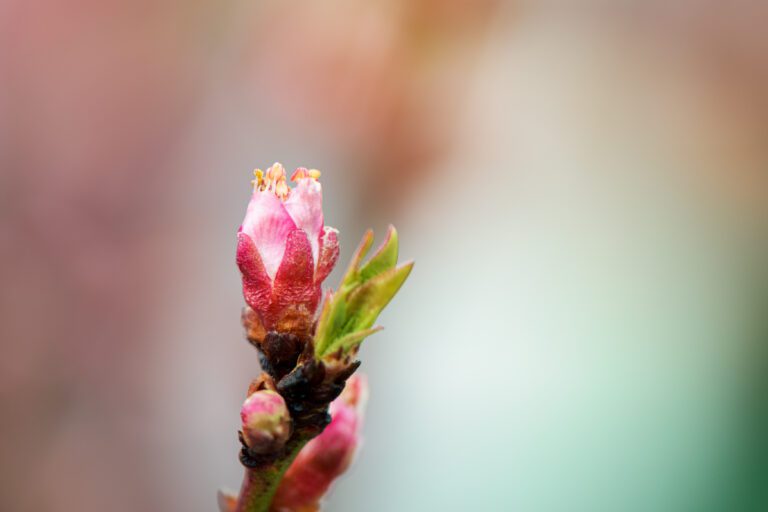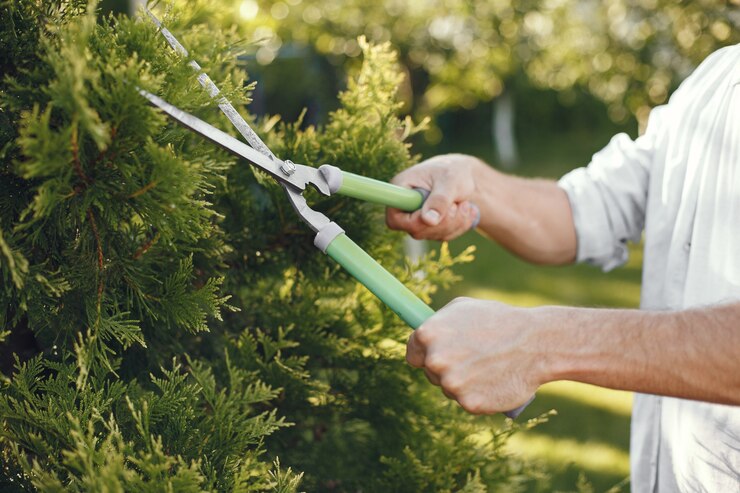Ornamental Peppers: Decorative and Edible Vibrant Garden Gems
Table of Contents
Benefits of Growing Ornamental Pepper
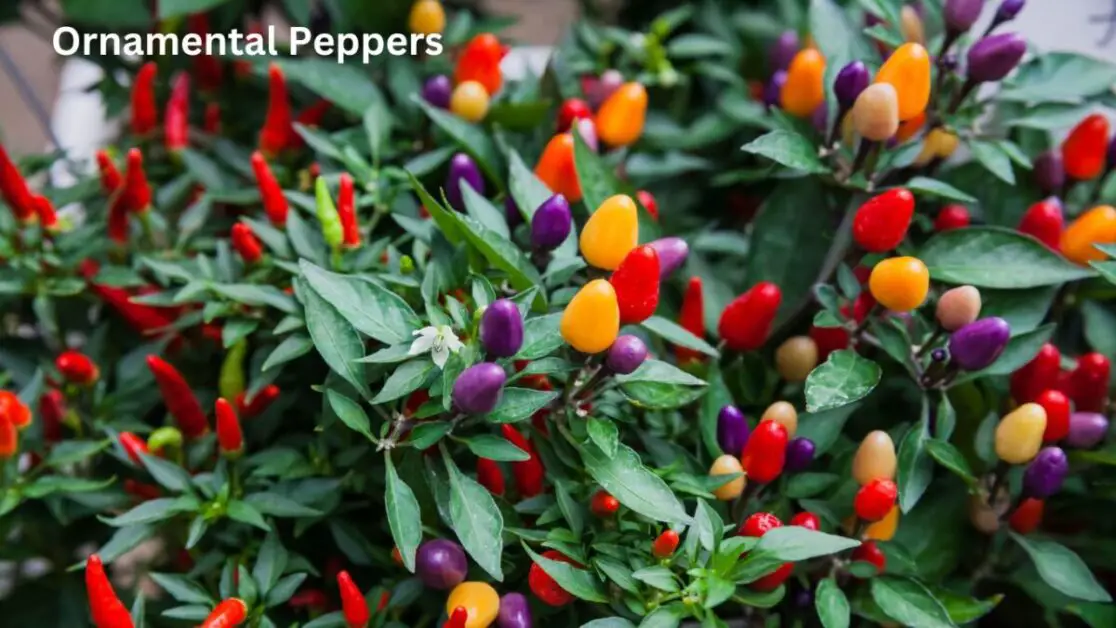
Ornamental peppers are not only visually stunning additions to any garden, but they also offer a myriad of benefits beyond their aesthetic appeal. One of the key advantages of growing ornamental peppers is their versatility in design. These vibrant plants can be used to create striking landscapes, adding pops of color and texture to flower beds, borders, and containers. Whether you’re aiming for a bold and fiery display or a subtle touch of whimsy, ornamental peppers can easily be incorporated into various garden styles to suit your preferences.
In addition to their ornamental value, ornamental peppers also serve as natural pest repellents. Many varieties of ornamental peppers produce capsaicin, the compound responsible for their spicy heat, which deters common garden pests such as aphids, spider mites, and caterpillars. By planting ornamental peppers strategically throughout your garden, you can help protect your other plants from damage caused by these unwanted visitors, promoting overall plant health and reducing the need for harsh chemical pesticides.
Different Varieties of Ornamental Pepper
Ornamental peppers come in a wide array of varieties, each boasting unique characteristics that add a splash of color and vibrancy to gardens and landscapes. From the petite ‘Black Pearl’ with its dark, almost black foliage and small, round fruit to the fiery ‘Hot Sunset’ with its striking yellow and orange peppers that mature to a deep red hue, there is a pepper plant to suit every aesthetic preference. For those looking to add a touch of elegance, the ‘Medusa’ variety presents cascading fruits that dangle like ornate jewels, while the ‘Purple Flash’ variety showcases stunning purple foliage that creates a dramatic contrast against the bright red peppers.
In addition to their visual appeal, ornamental peppers also vary in terms of heat levels, ranging from mild to extremely spicy. Whether you prefer a subtle hint of heat or a fiery kick, there is a pepper variety to satisfy every palate. Varieties such as ‘NuMex Twilight’ offer a mild heat level that is perfect for adding flavor without overwhelming dishes, while ‘Black Pearl’ packs a punch with its fiery fruits that are sure to ignite the taste buds. With such a diverse array of ornamental pepper varieties available, gardeners can experiment with different colors, shapes, and flavors to create a truly unique and visually stunning garden display.
Tips for Growing Ornamental Pepper Successfully
Ornamental peppers are delightful additions to any garden, bringing a pop of color and interest to your outdoor space. To ensure successful growth of these vibrant plants, it’s essential to provide them with the right care and environment. One crucial tip for successful growth is to plant ornamental peppers in well-draining soil that is rich in nutrients. This will help prevent waterlogging, which can lead to root rot and other issues that may hinder plant development.
Additionally, ornamental peppers thrive in warm and sunny conditions, so it’s advisable to place them in a spot that receives plenty of sunlight throughout the day. Regular watering is also key to maintaining healthy growth, but be cautious not to overwater as this can cause problems like wilting and fungal diseases. By following these tips and providing the necessary care, you can enjoy a beautiful and flourishing display of ornamental peppers in your garden.
How to Incorporate Ornamental Pepper into Your Garden Design
Ornamental peppers are a vibrant addition to any garden design, offering a pop of color and texture that can truly elevate the overall aesthetic of your outdoor space. When thinking about how to incorporate ornamental peppers into your garden design, consider using them as border plants along pathways or garden beds to create a striking visual impact. Their compact size and variety of colors make them versatile for adding visual interest to different areas of your garden.
Another creative way to incorporate ornamental peppers into your garden design is by planting them in containers or hanging baskets. This not only adds a decorative element to your patio or balcony but also allows you to move them around to find the perfect spot for showcasing their beauty. Mix and match different varieties of ornamental peppers to create a diverse display that will attract attention and spark conversation among your guests.
Ornamental Pepper as a Natural Pest Repellent
Ornamental peppers not only add vibrant colors to your garden but also serve as natural pest repellents. These peppers contain capsaicin, the compound responsible for their spicy heat, which acts as a deterrent for pests like aphids, spider mites, and even rabbits. Planting ornamental peppers strategically can help protect your other plants from insect damage without the need for harmful chemicals.
In addition to their pest-repelling properties, ornamental peppers can also attract beneficial insects like ladybugs and lacewings, which prey on common garden pests. By incorporating these peppers into your garden design, you can create a balanced ecosystem that promotes natural pest control. Consider planting them near susceptible plants or as borders to deter pests and attract beneficial insects, contributing to a healthier and more sustainable garden environment.
Creative Ways to Use Ornamental Pepper in Cooking
Ornamental peppers aren’t just beautiful additions to your garden; they can also be a versatile ingredient in your kitchen. Their vibrant colors and varying levels of heat can add a unique twist to your dishes. One creative way to use ornamental peppers in cooking is to make a spicy pepper jelly. By combining chopped ornamental peppers with sugar, vinegar, and pectin, you can create a delicious jelly that pairs well with crackers and cheese.
Another fun way to incorporate ornamental peppers into your cooking is by making infused oils or vinegars. Simply add some sliced peppers to a bottle of olive oil or vinegar and let it sit for a few weeks to infuse the flavors. Use the flavored oils in dressings or marinades, or drizzle them over roasted vegetables for a spicy kick. The possibilities are endless when it comes to experimenting with ornamental peppers in the kitchen!
The Health Benefits of Eating Ornamental Pepper
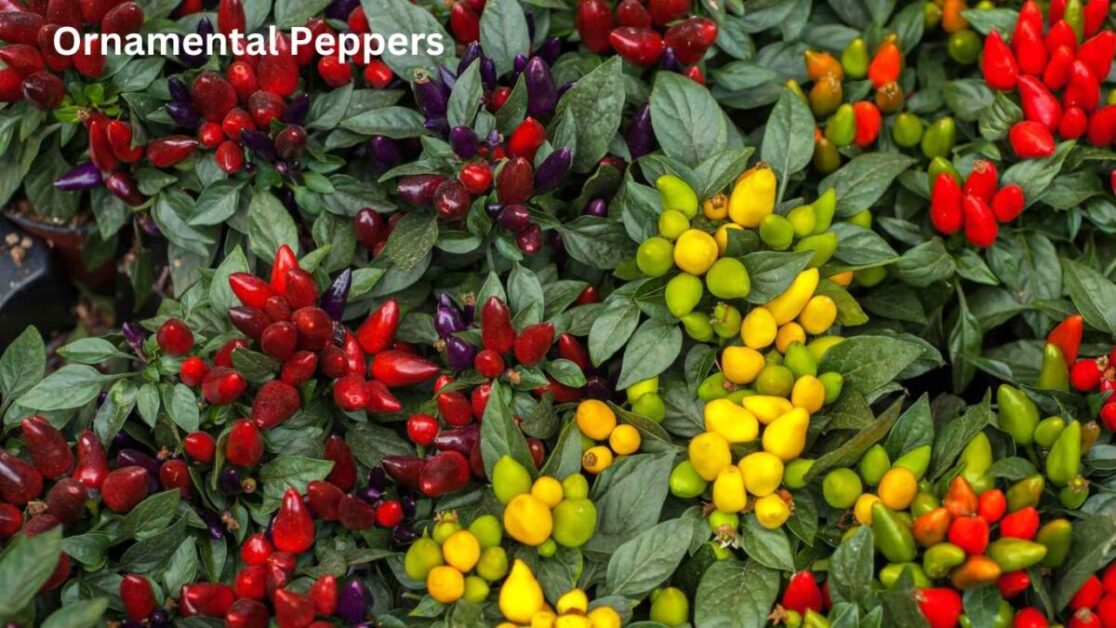
Ornamental peppers are not just visually appealing additions to your garden; they also offer a range of health benefits when consumed. Packed with essential vitamins and minerals, ornamental peppers can boost your immune system and overall health. These vibrant peppers are a rich source of vitamin C, which is known for its antioxidant properties that help fight off free radicals and reduce inflammation in the body.
In addition to vitamin C, ornamental peppers also contain capsaicin, the compound responsible for their spicy heat. Capsaicin has been studied for its potential to aid in weight loss, reduce pain, and lower the risk of cardiovascular diseases. Including ornamental peppers in your diet can add a flavorful kick to your meals while providing you with a dose of beneficial nutrients that support your well-being.
Common Pests and Diseases that Affect Ornamental Pepper
Ornamental peppers, while generally resilient plants, can fall victim to a variety of pests and diseases that can hinder their growth and beauty. One common pest that affects ornamental peppers is aphids. These small insects feed on the sap of the plants, causing leaves to curl and distort, ultimately weakening the overall health of the peppers. Another frequent invader is the spider mite, which can be identified by the fine webbing they produce on the plant and the stippling of the leaves they feed upon. These pests can rapidly multiply in dry and hot conditions, making it crucial to monitor and control their populations promptly.
Moving on to diseases that ornamental peppers may encounter, one of the most prevalent is powdery mildew. This fungal disease forms a white, powdery coating on the leaves and stems of the plant, inhibiting photosynthesis and leading to stunted growth. Another common disease is bacterial spot, which manifests as dark, water-soaked lesions on the leaves and fruits, potentially causing extensive damage if not addressed early on. Proper ventilation, appropriate watering practices, and periodic inspections are key measures to prevent the occurrence and spread of these pests and diseases, ensuring the vibrancy and vitality of your ornamental pepper plants.
Harvesting and Preserving Ornamental Pepper
When it comes to harvesting and preserving ornamental peppers, timing is key. Most ornamental peppers can be harvested once they have reached their mature color, whether it be red, orange, yellow, purple, or black. It’s important to handle the peppers carefully to avoid damaging the plant. Using sharp scissors or pruners, cut the peppers from the plant, leaving a small stem attached. This helps in the preservation process and prolongs the shelf life of the peppers.
Preserving ornamental peppers can be done in various ways, depending on your preference. One popular method is drying them. You can air-dry the peppers by hanging them in a well-ventilated area with good air circulation. Alternatively, you can use a dehydrator to speed up the drying process. Once dried, you can store the peppers in airtight containers in a cool, dry place. Dried ornamental peppers can be used whole, crushed, or ground into a spice to add flavor and color to your dishes.
The Best Companion Plants for Ornamental Pepper
Companion planting is an effective strategy to enhance the growth and health of ornamental peppers while promoting biodiversity in your garden. When selecting companion plants for ornamental peppers, it is essential to consider plants that share similar sunlight, watering, and soil requirements. Marigolds are a fantastic companion plant for ornamental peppers due to their ability to repel pests like nematodes and aphids. Additionally, marigolds attract beneficial insects such as ladybugs and predatory wasps, which help in controlling pests naturally. The vibrant colors of marigolds also complement the ornamental nature of pepper plants, creating a visually appealing garden setting.
Another excellent companion plant for ornamental peppers is basil. Basil not only acts as a natural pest deterrent, particularly against mosquitoes and flies, but it also improves the flavor of peppers when grown in close proximity. The aromatic oils released by basil plants can confuse and repel insect pests that may damage the ornamental pepper plants. Furthermore, basil’s lush foliage and compact growth habit make it an ideal companion for ornamental peppers, providing a beautiful contrast and texture within the garden bed.
Ornamental Pepper: A Low Maintenance Plant
Ornamental peppers are an excellent choice for gardeners looking for a low maintenance plant that adds a pop of color to their outdoor space. These vibrant plants require minimal care and attention, making them ideal for busy individuals or those new to gardening. With proper watering, sunlight, and well-draining soil, ornamental peppers can thrive without the need for constant upkeep.
One of the key reasons ornamental peppers are considered a low maintenance plant is their ability to withstand a variety of growing conditions. From hot and dry climates to slightly cooler temperatures, these versatile plants can adapt to different environments with ease. Additionally, ornamental peppers are relatively pest and disease resistant, further reducing the amount of time and effort required to keep them healthy.
Exploring the History of Ornamental Pepper
Ornamental peppers, with their vibrant colors and unique shapes, have a fascinating history that traces back hundreds of years. Originating from Central and South America, these peppers were initially cultivated for their ornamental value before their culinary uses were discovered. The cultivation of ornamental peppers can be traced back to ancient civilizations like the Aztecs and Mayans, who prized these plants for their beauty and believed in their mystical properties.
Throughout history, ornamental peppers have been used for various purposes beyond just aesthetics. In addition to their decorative appeal, these peppers have been utilized for their reputed medicinal properties in traditional medicine practices. The rich heritage of ornamental peppers is a testament to the enduring fascination that humans have had with these plants across different cultures and time periods.
Using Ornamental Pepper for Homemade Remedies
Ornamental peppers are not just a beautiful addition to your garden; they can also be utilized in various homemade remedies due to their potent properties. These peppers contain capsaicin, a compound known for its anti-inflammatory and pain-relieving effects. A simple DIY pepper salve made from infused oil can be used topically to alleviate muscle aches and joint pains. The warming sensation provided by capsaicin can help increase blood flow to the affected area, promoting faster healing.
Moreover, ornamental peppers can be incorporated into homemade insect repellents due to their natural deterrent properties. Capsaicin is irritating to insects, making it an effective ingredient in creating a non-toxic spray to ward off pests in your garden. By blending infused pepper water with other essential oils like peppermint or lavender, you can create a potent yet eco-friendly solution to keep unwanted bugs at bay.
Ornamental Pepper in Folklore and Mythology
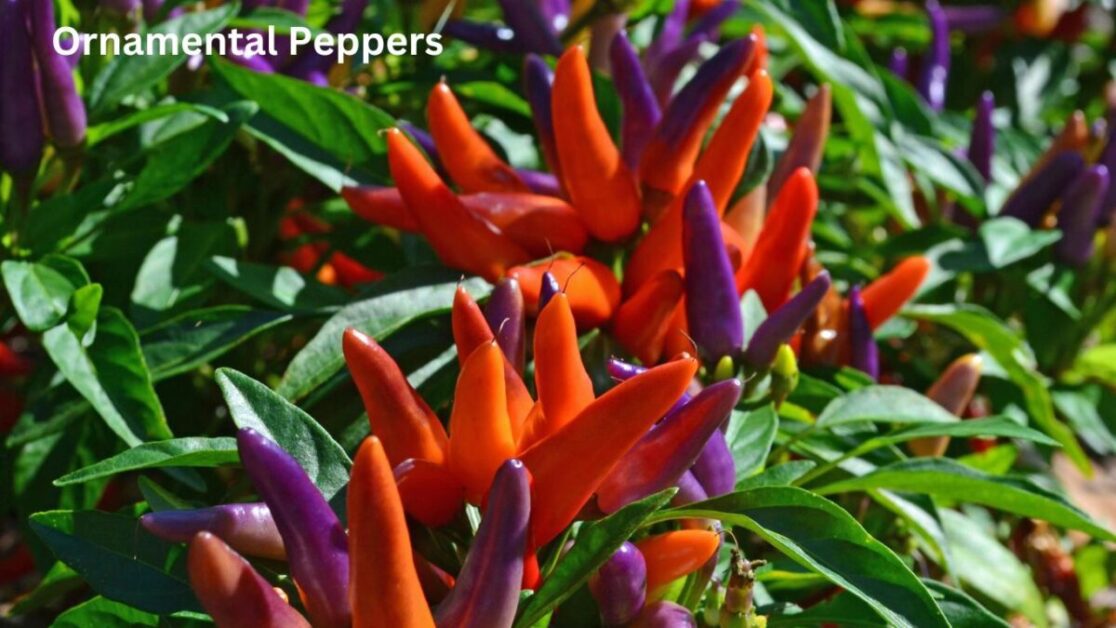
In various cultures around the world, ornamental peppers hold symbolic significance and are often associated with different folklore and mythological beliefs. For instance, in some regions, ornamental peppers are believed to bring good luck and prosperity to households that plant them in their gardens. It is thought that the vibrant colors of the peppers symbolize positive energy and abundance, attracting good fortune to those who cultivate them.
Additionally, in certain mythological tales, ornamental peppers are linked to protection and warding off evil spirits. The spicy nature of these peppers is believed to act as a deterrent against negative forces, creating a shield of defense around the spaces where they are grown. This folklore highlights the dual role of ornamental peppers as not only aesthetically pleasing plants but also as guardians of homes and gardens against malevolent influences.
here’s a simple table about Ornamental Pepper showcasing both their decorative and edible attributes:
| Aspect | Description |
|---|---|
| Plant Type | Ornamental Pepper plants are typically compact, bushy, and highly decorative. |
| Height | They usually range from 6 inches to 2 feet in height, depending on the variety. |
| Foliage | The foliage comes in various colors including green, purple, red, and variegated patterns. |
| Fruit Colors | Fruits vary widely in color, ranging from bright red, orange, yellow, purple, to black. |
| Fruit Size | The size of the fruits can be anywhere from small, round berries to elongated shapes resembling pods. |
| Ornamental Value | Ornamental Peppers are prized for their vibrant foliage and colorful fruits, adding beauty to gardens, containers, and landscapes. |
| Edible Use | While Ornamental Peppers are primarily grown for their ornamental value, many varieties are edible, though often extremely spicy. They can be used fresh or dried to add heat and flavor to dishes. However, caution is advised as some varieties can be exceptionally hot. |
| Culinary Usage | Commonly used in spicy cuisines such as Mexican, Thai, and Indian, Ornamental Peppers add heat and flavor to dishes like salsas, curries, and sauces. |
| Growing Zones | They are typically grown as annuals in cooler climates but can be perennial in warmer regions, usually in USDA Hardiness Zones 9-11. |
| Care Requirements | Ornamental Peppers prefer full sun, well-drained soil, and regular watering. They are relatively easy to grow and maintain. |
| Companion Plants | They pair well with other ornamental plants such as marigolds, petunias, and coleus, adding a pop of color to mixed containers and flower beds. |
This table provides an overview of the characteristics, uses, and care requirements of Ornamental Peppers, emphasizing their dual role as both decorative and edible garden gems.
The Environmental Benefits of Growing Ornamental Pepper
Ornamental peppes not only add a colorful and vibrant touch to your garden but also offer environmental benefits that contribute to a sustainable ecosystem. These peppers are known to attract beneficial insects such as ladybugs and lacewings, which help control harmful pests naturally. By incorporating ornamental pepper into your garden, you are promoting biodiversity and creating a more balanced and resilient environment.
In addition, ornamental pepper require minimal chemical inputs compared to traditional ornamental plants, making them a more eco-friendly option for your garden. Their resilience to pests and diseases reduces the need for pesticides, leading to a healthier and safer growing environment. Furthermore, the bright hues of ornamental pepper can attract pollinators like bees and butterflies, contributing to the overall health of your garden ecosystem. By growing ornamental pepper, you are not only enhancing the beauty of your garden but also supporting a more sustainable and environmentally friendly landscape.
How do ornamental peppers benefit the environment?
Ornamental peppers can attract beneficial insects like bees and butterflies to your garden, promoting pollination and biodiversity. Additionally, their vibrant colors and striking appearance can enhance the aesthetic appeal of outdoor spaces, contributing to a more visually appealing environment.
Do ornamental peppers require a lot of water and maintenance?
Ornamental peppers are relatively low maintenance plants that thrive in well-drained soil and require minimal watering once established. They are also resistant to pests and diseases, making them an easy and sustainable choice for gardeners.
Can ornamental peppers be grown in containers?
Yes, ornamental peppers can be successfully grown in containers, making them a versatile option for small gardens, balconies, or indoor spaces. Just ensure that the container has proper drainage holes and is filled with well-draining soil.
Are ornamental peppers safe for pets and children?
While ornamental peppers are not toxic to humans, they can cause stomach upset if ingested in large quantities. It is always best to keep ornamental peppers out of reach of pets and children to avoid any potential adverse effects.



